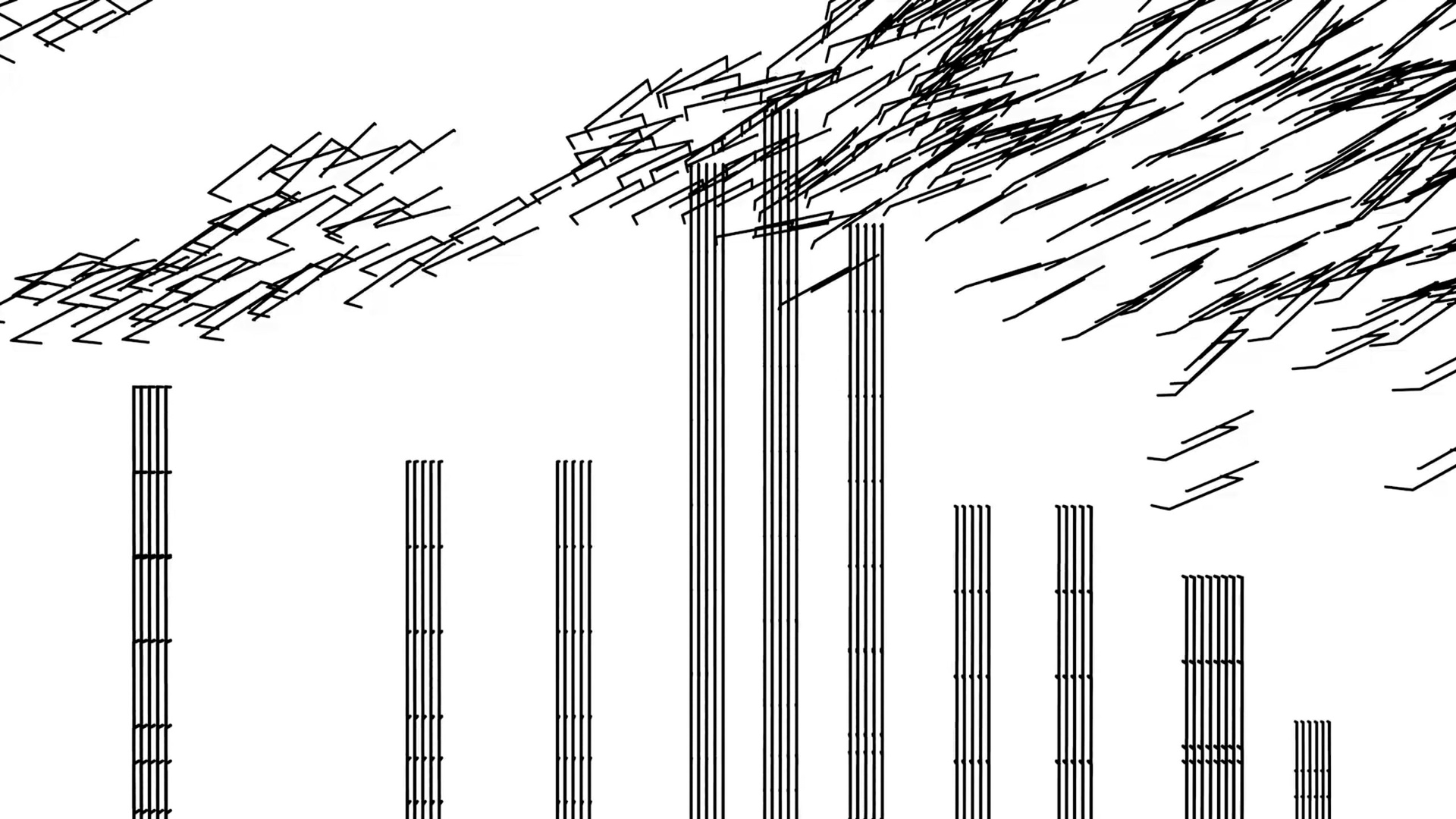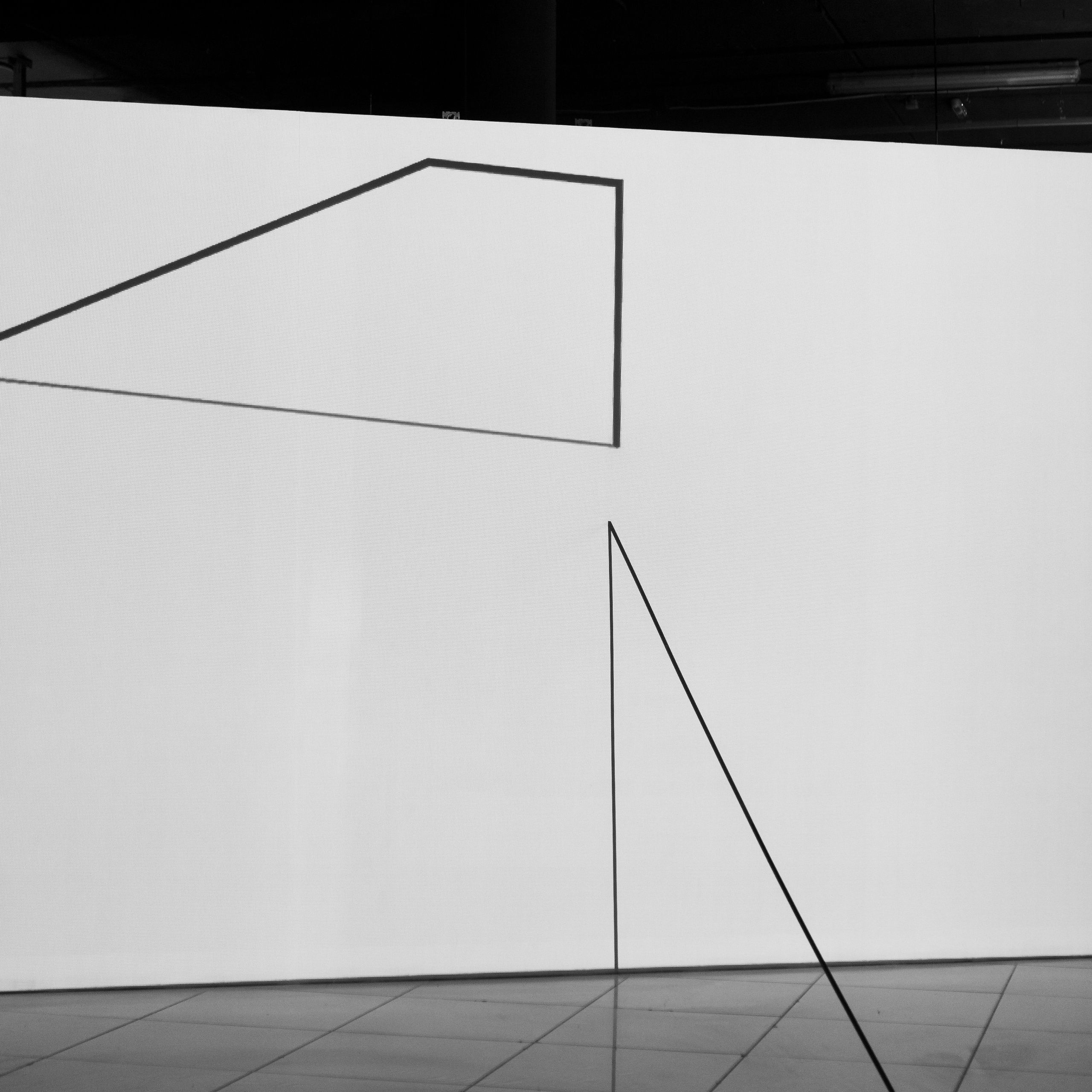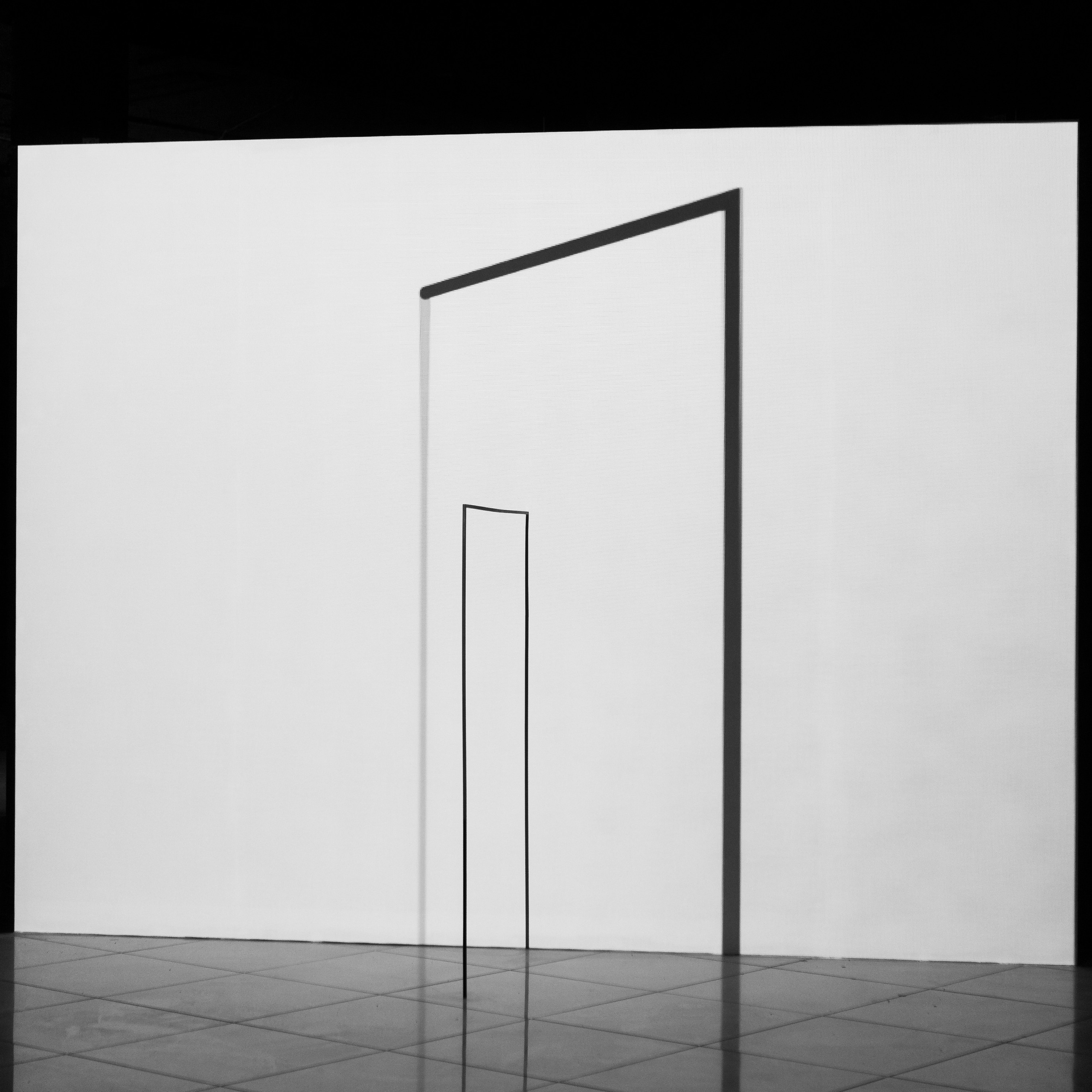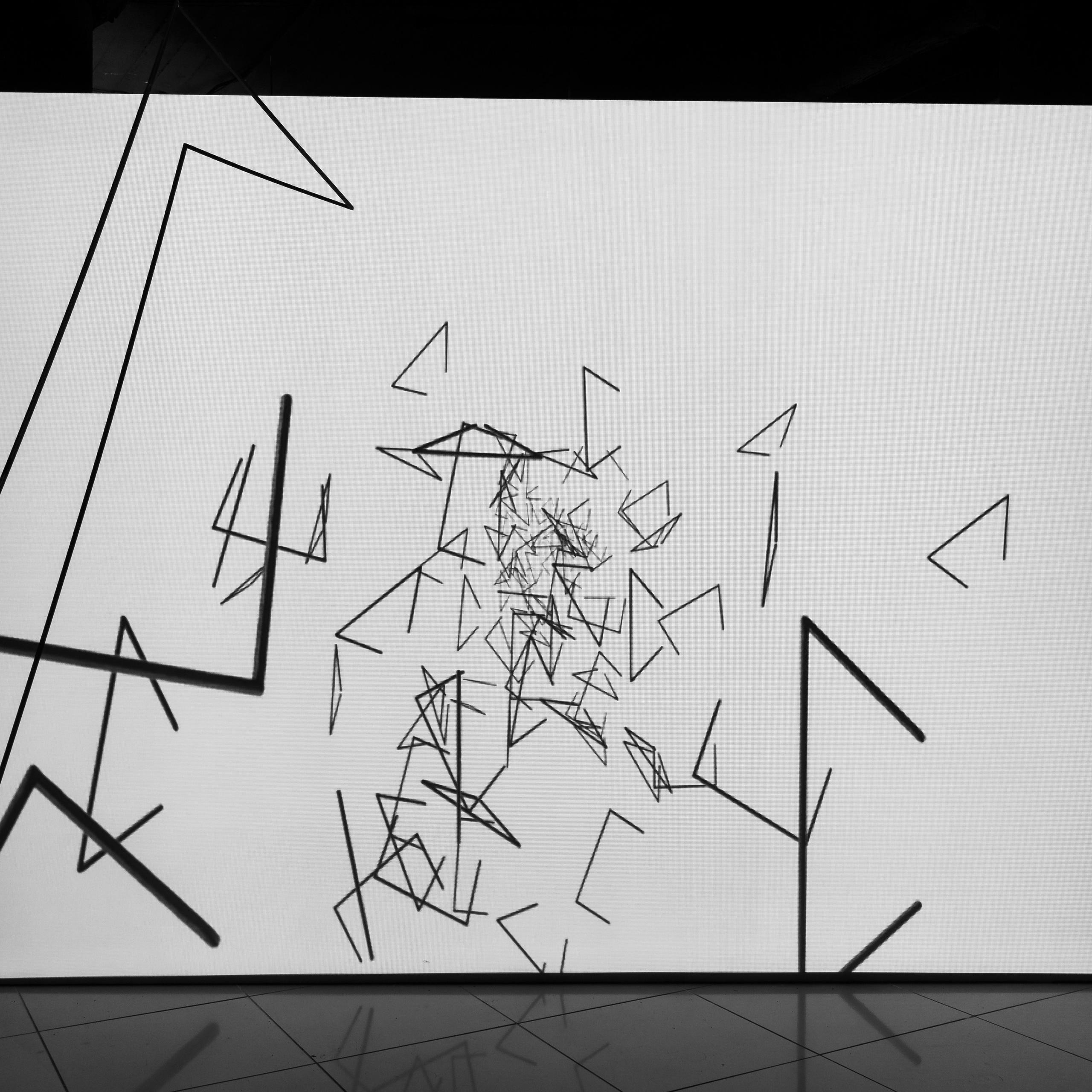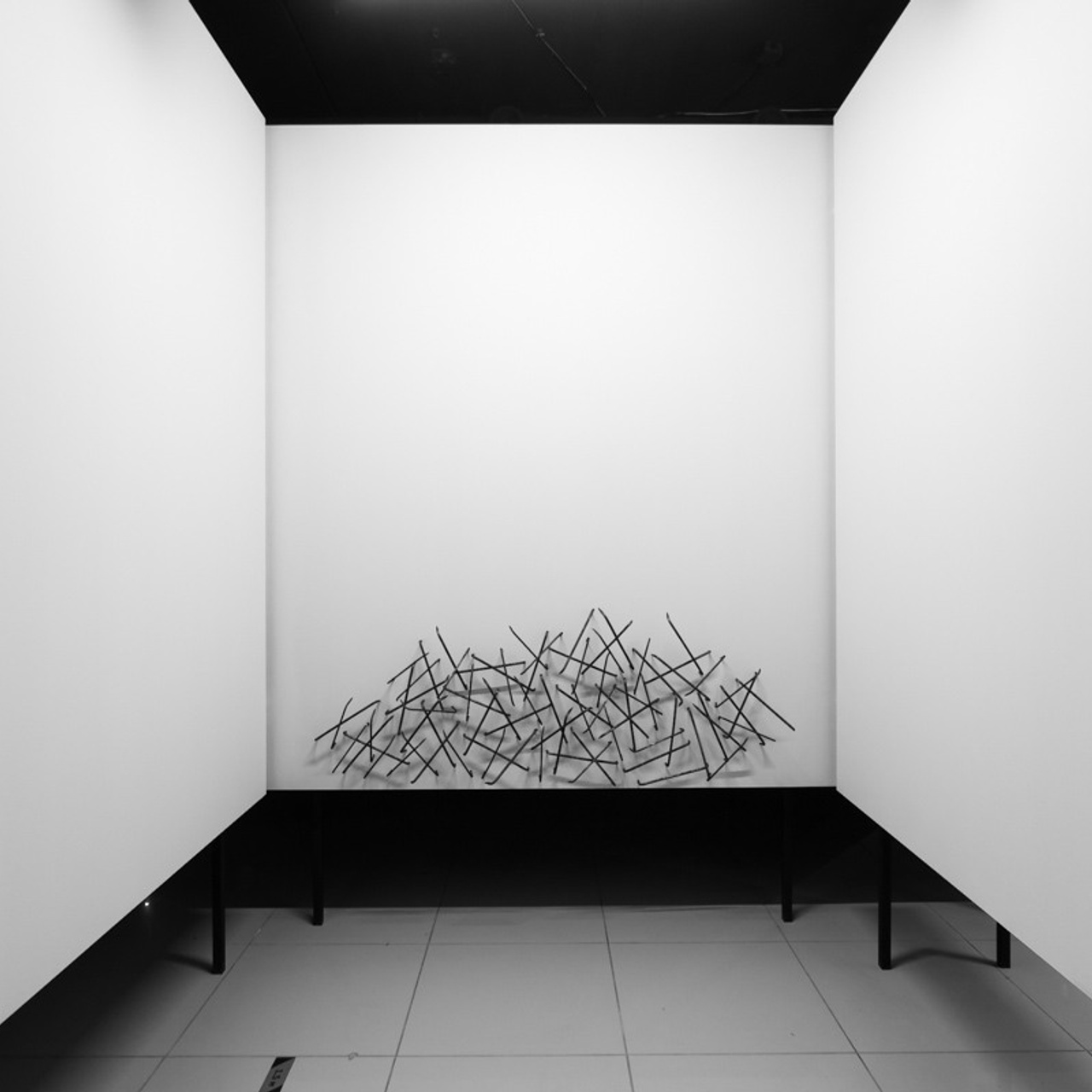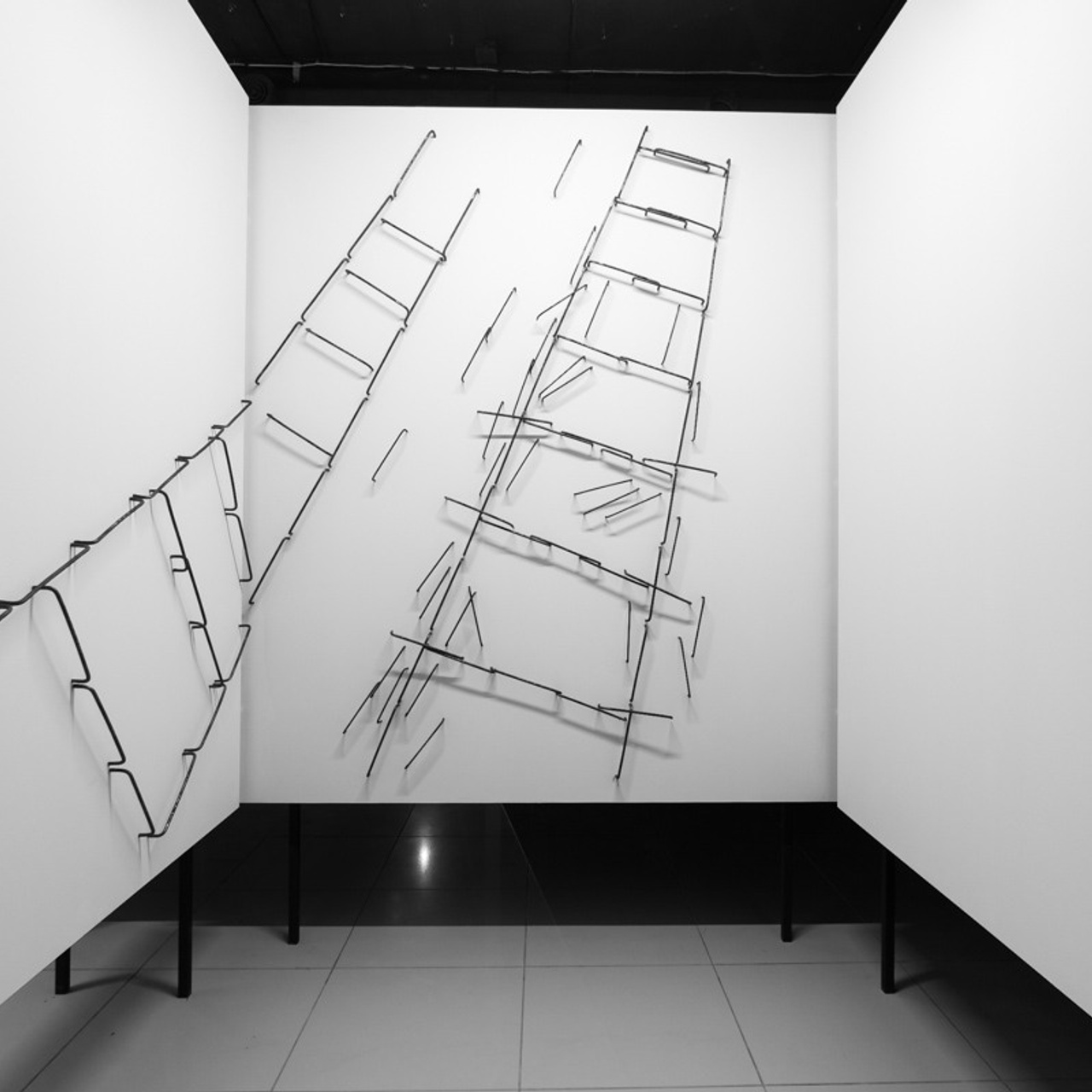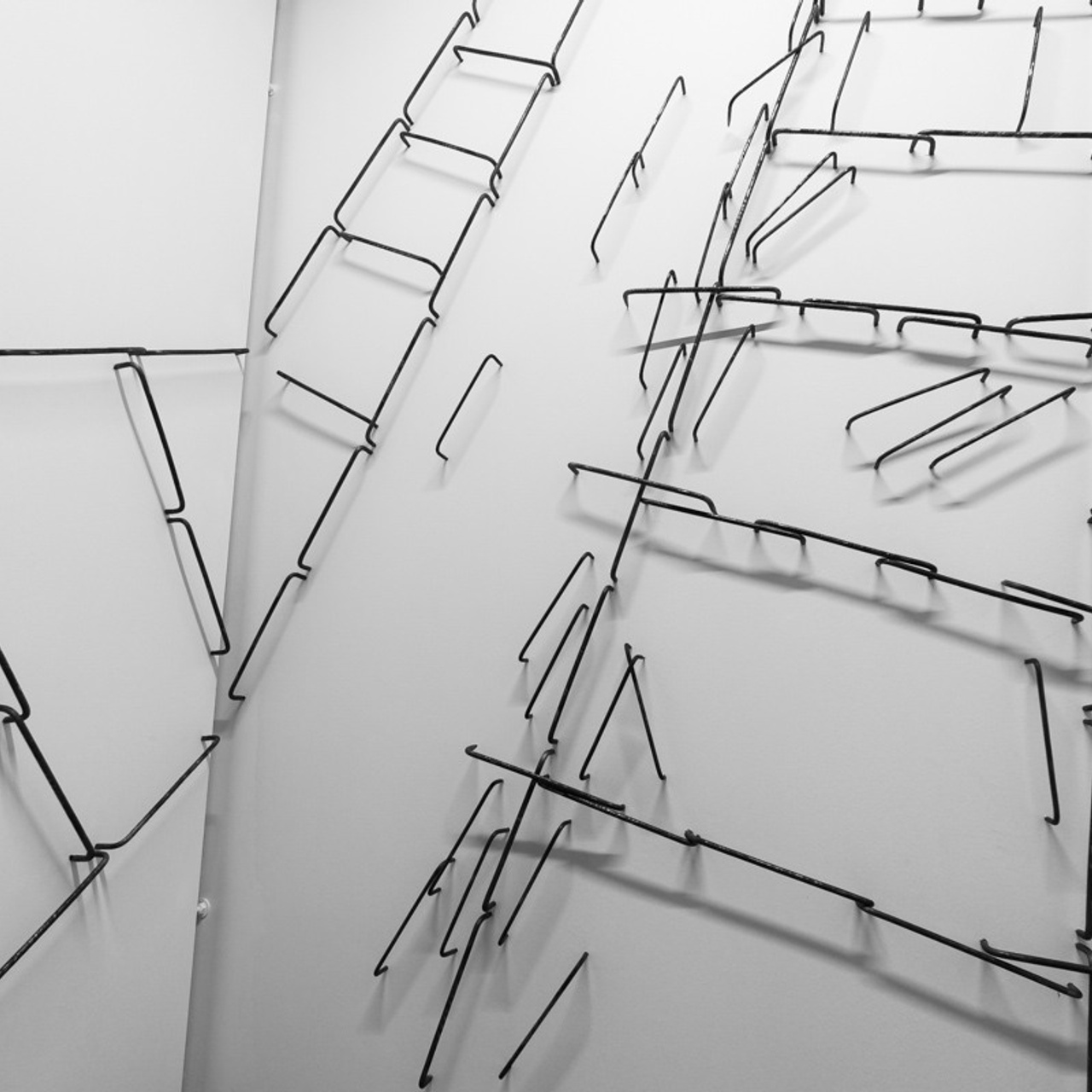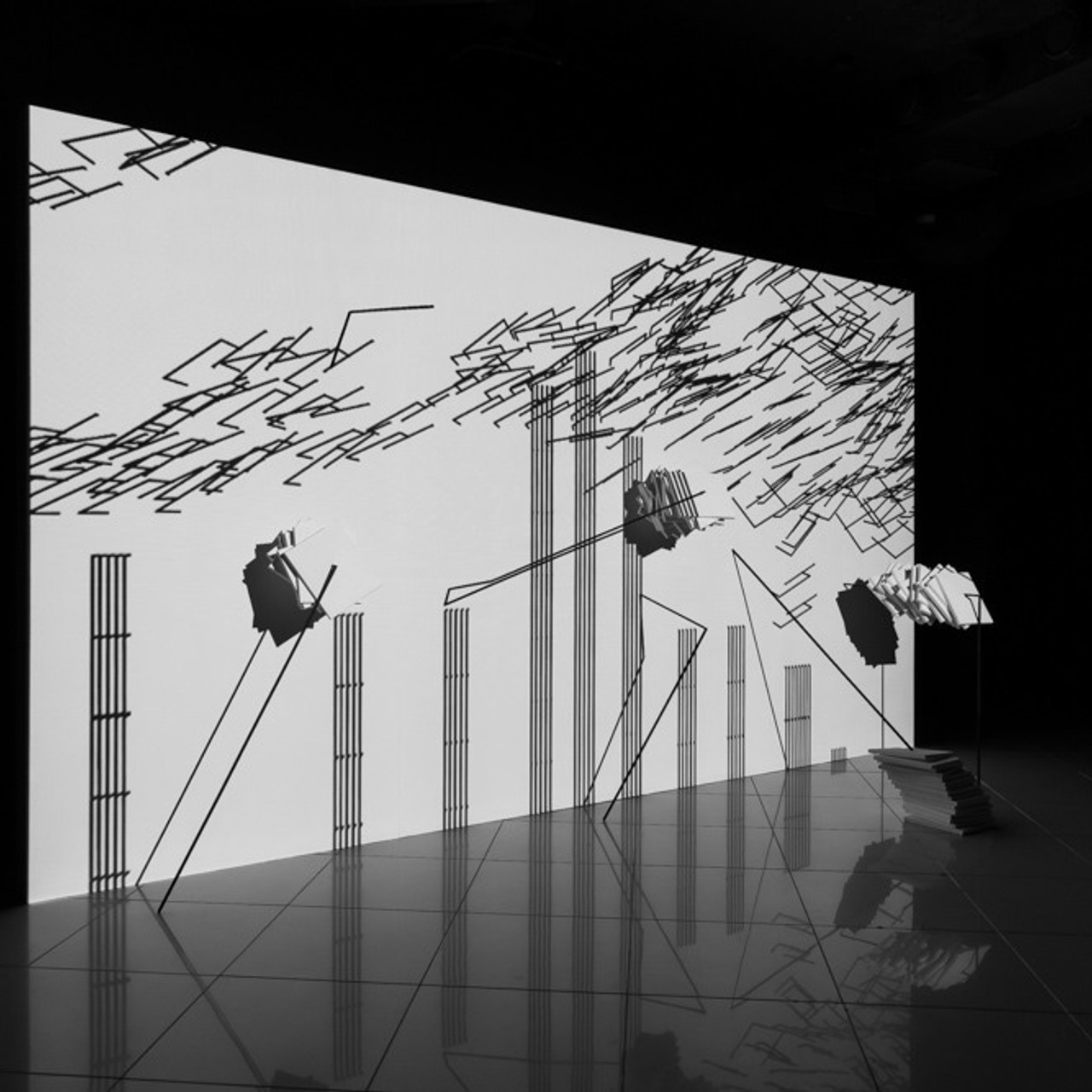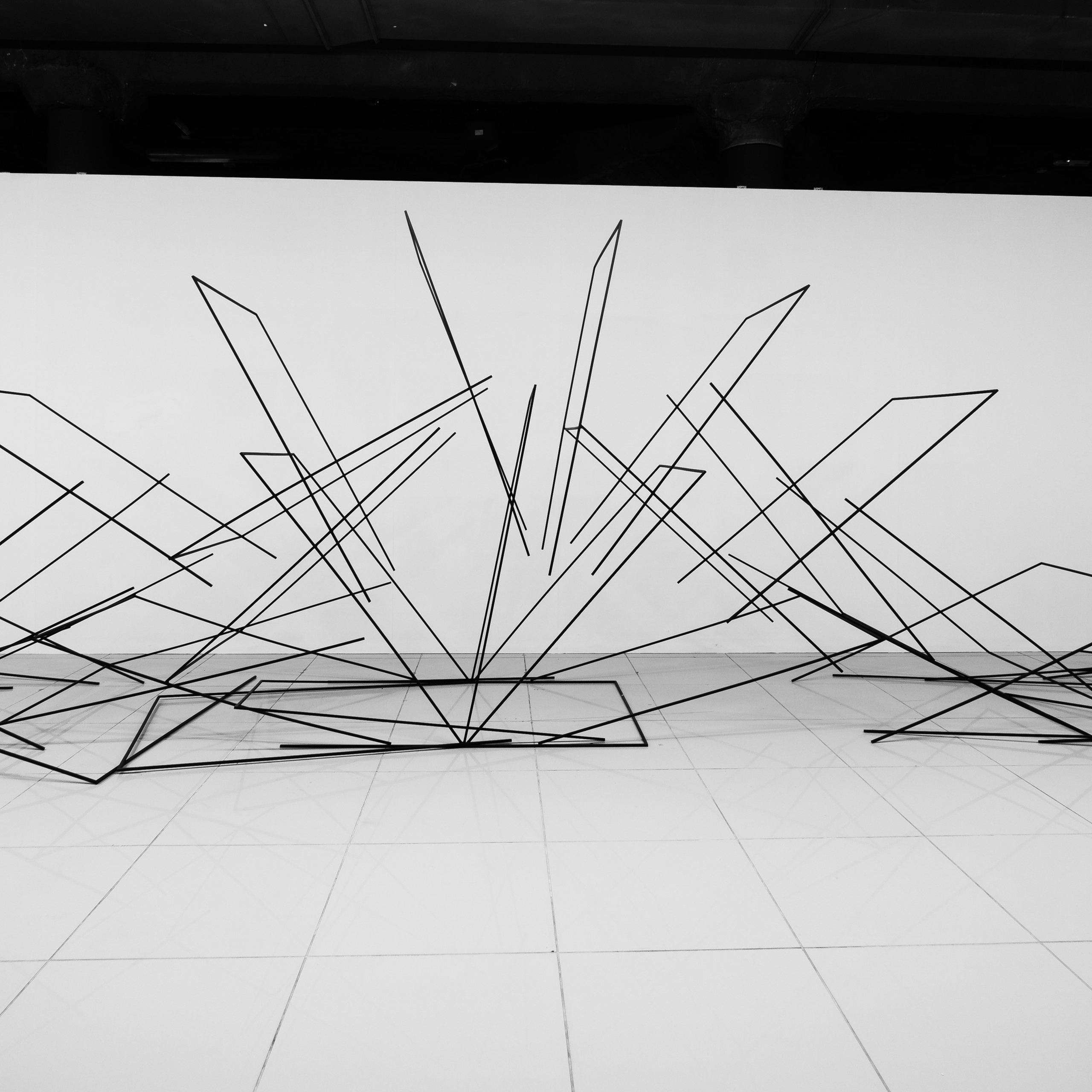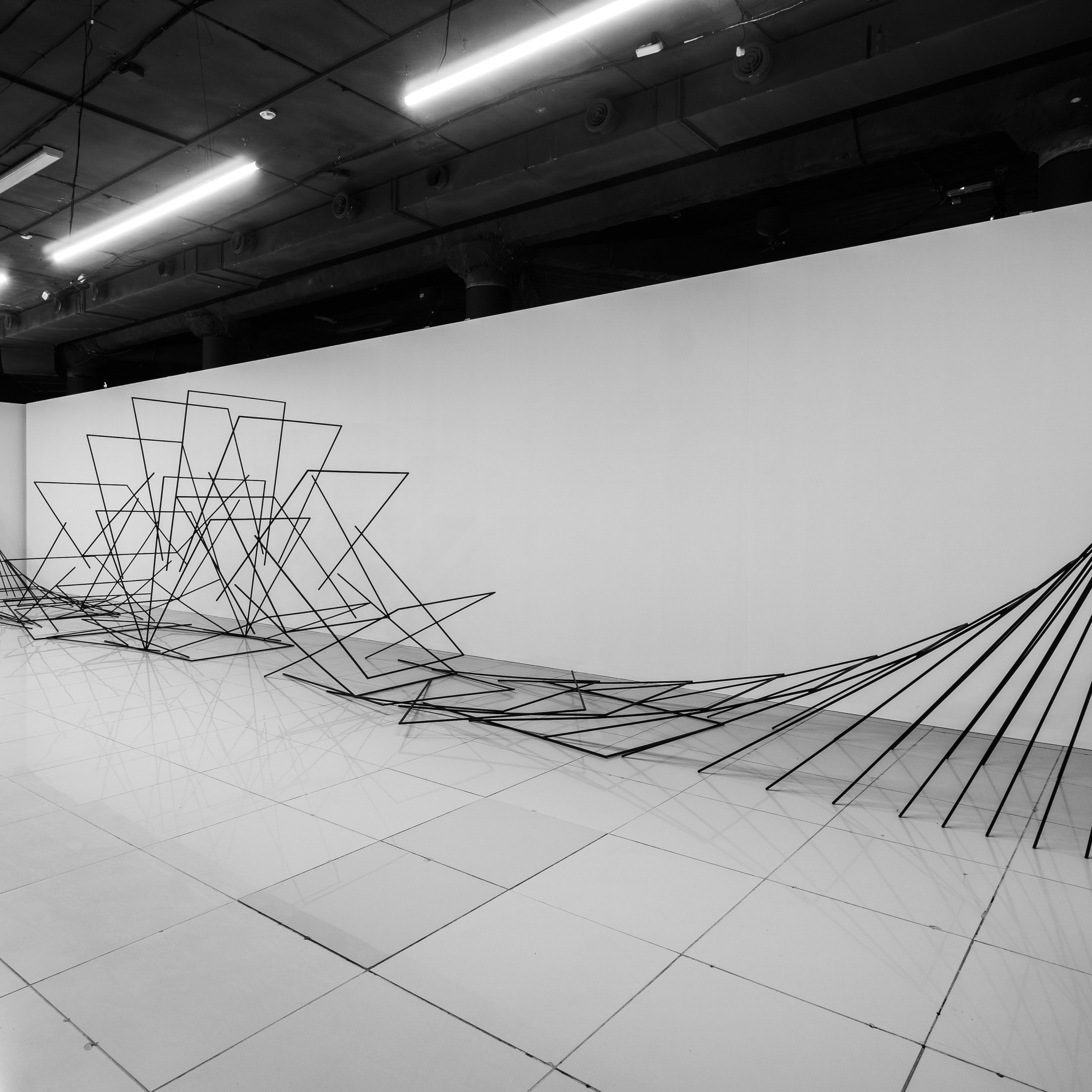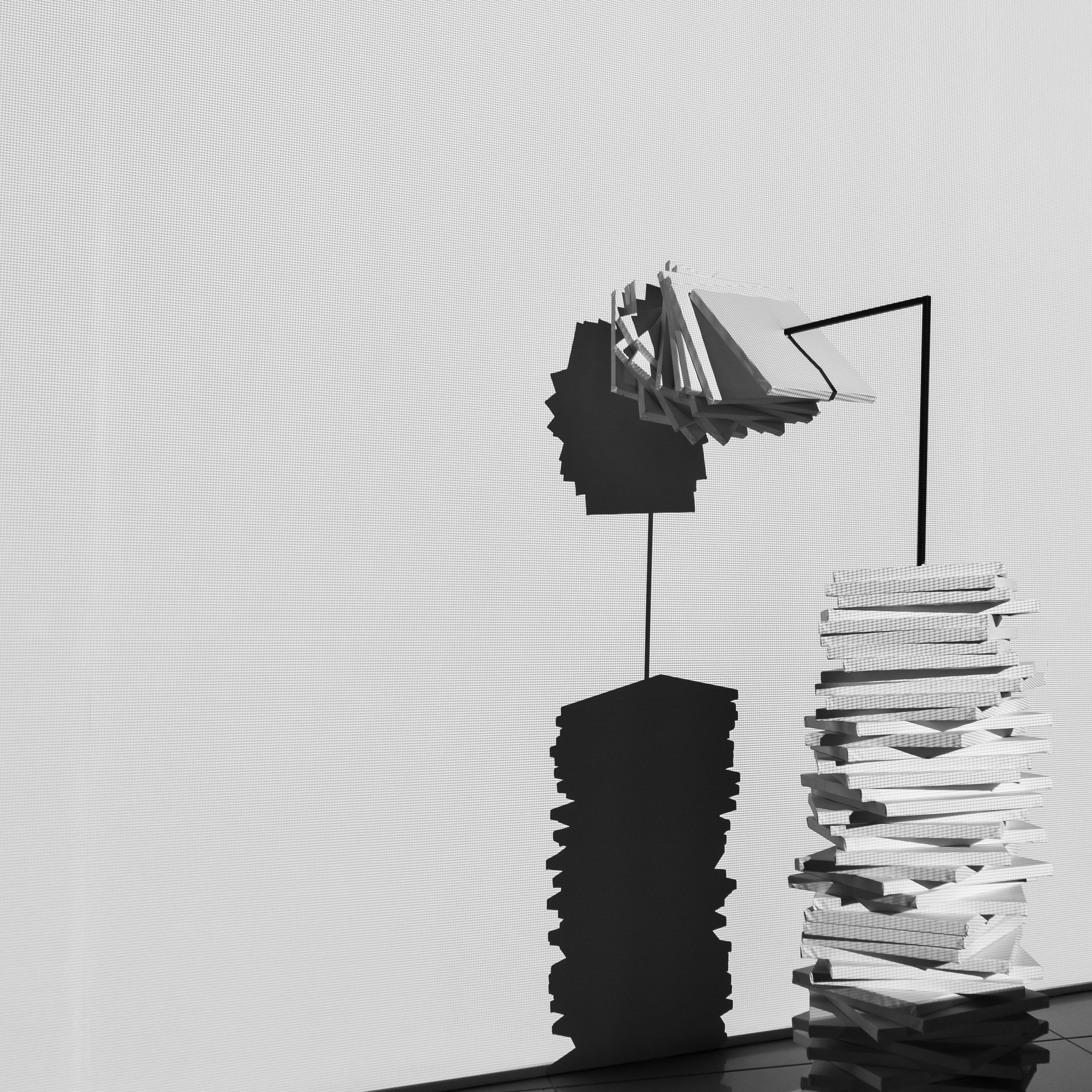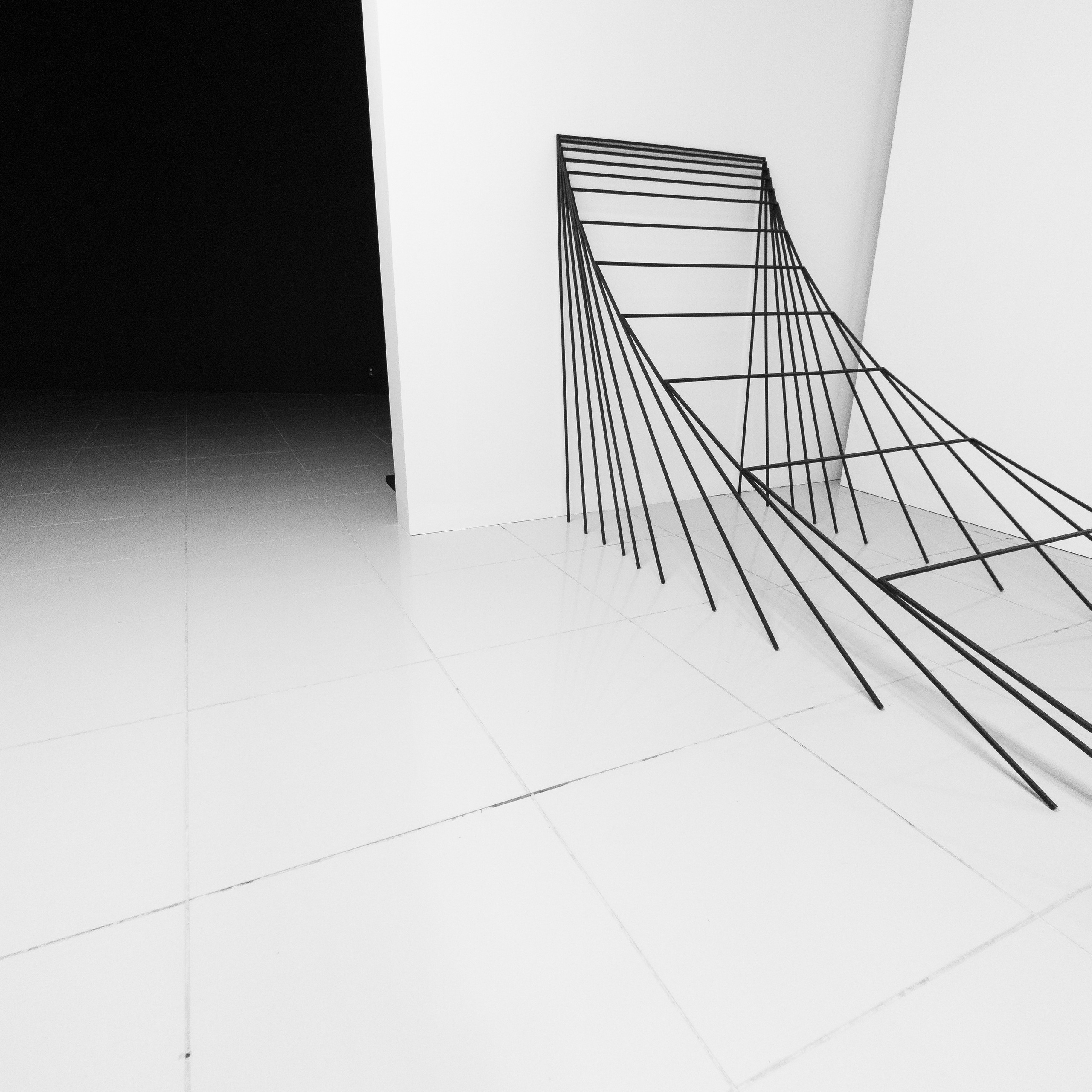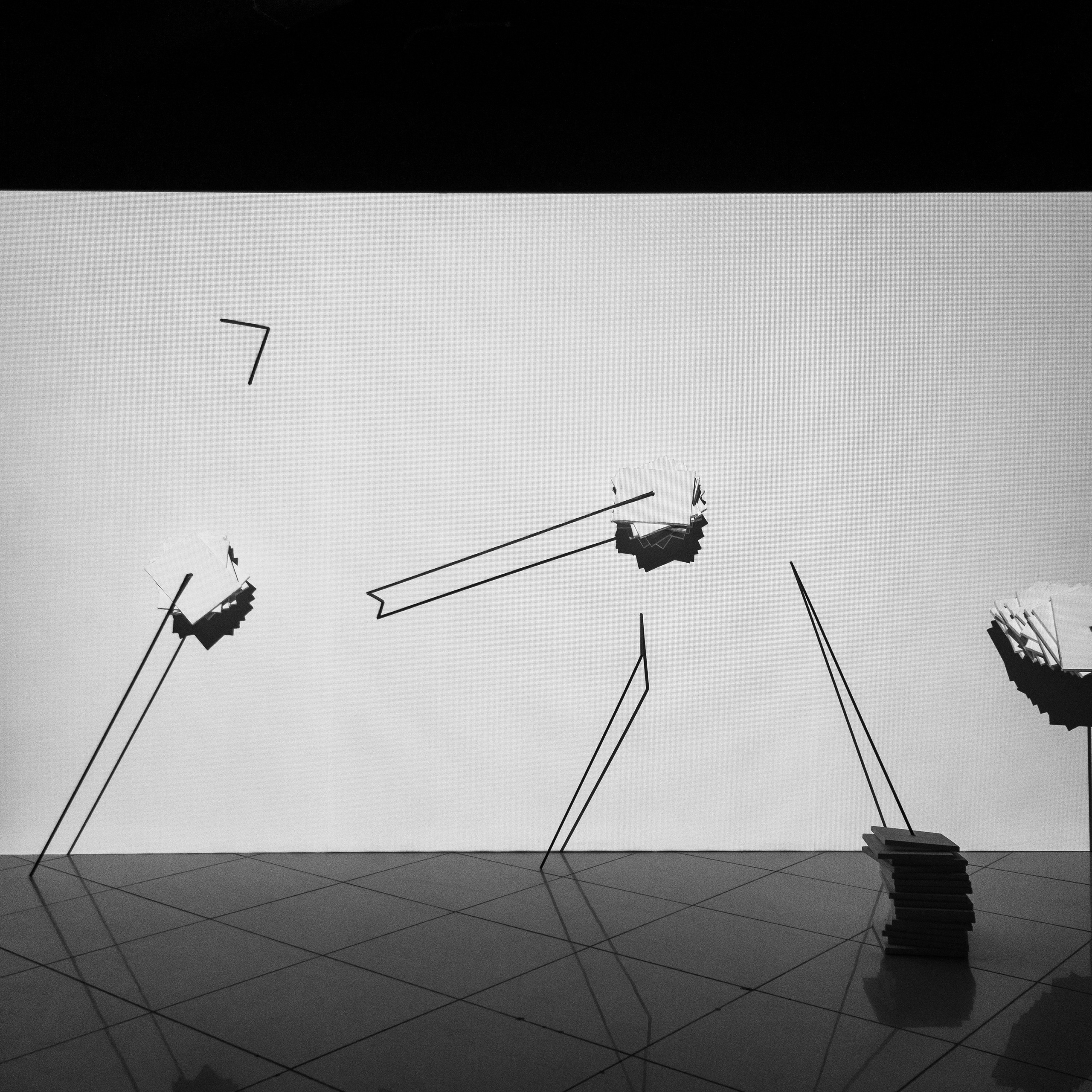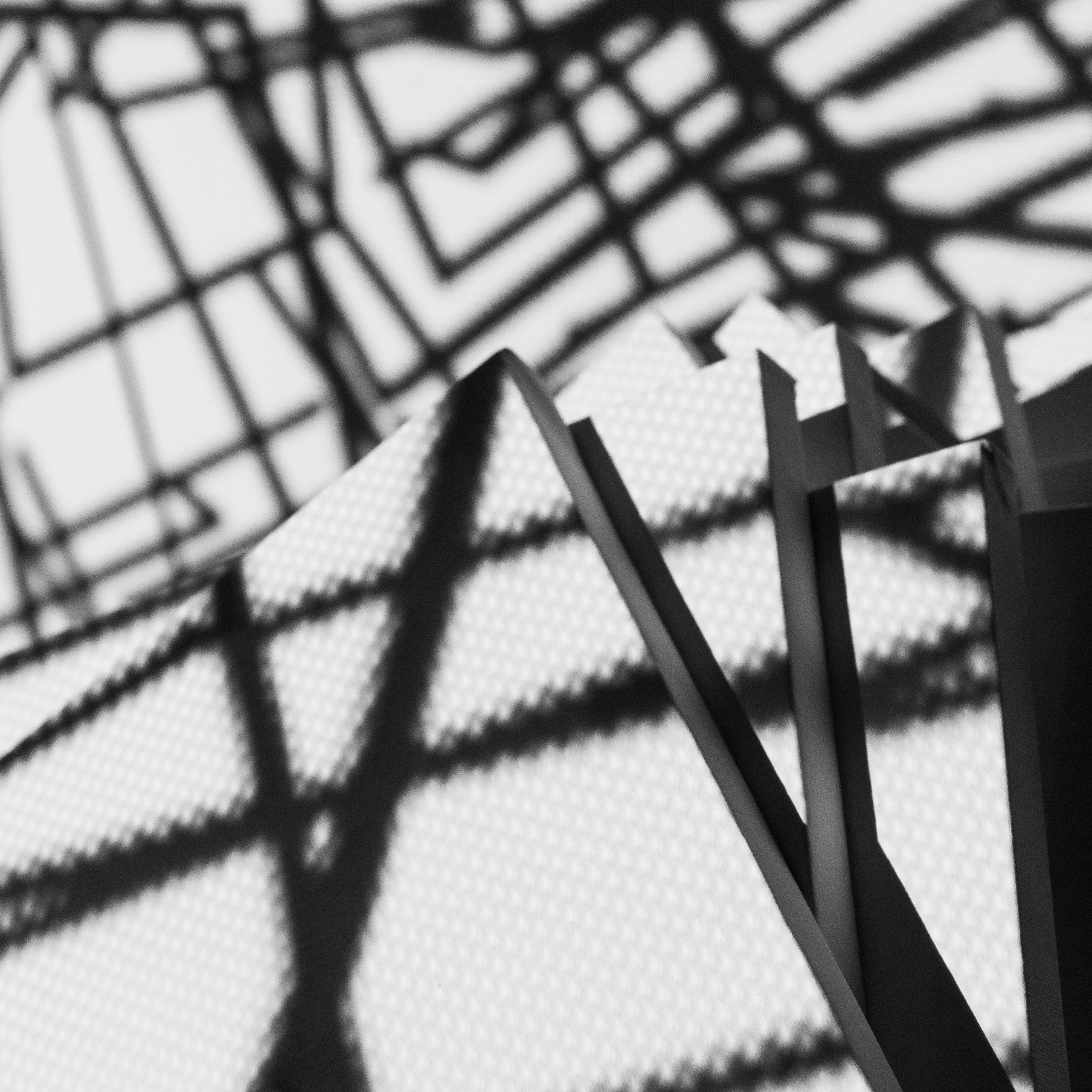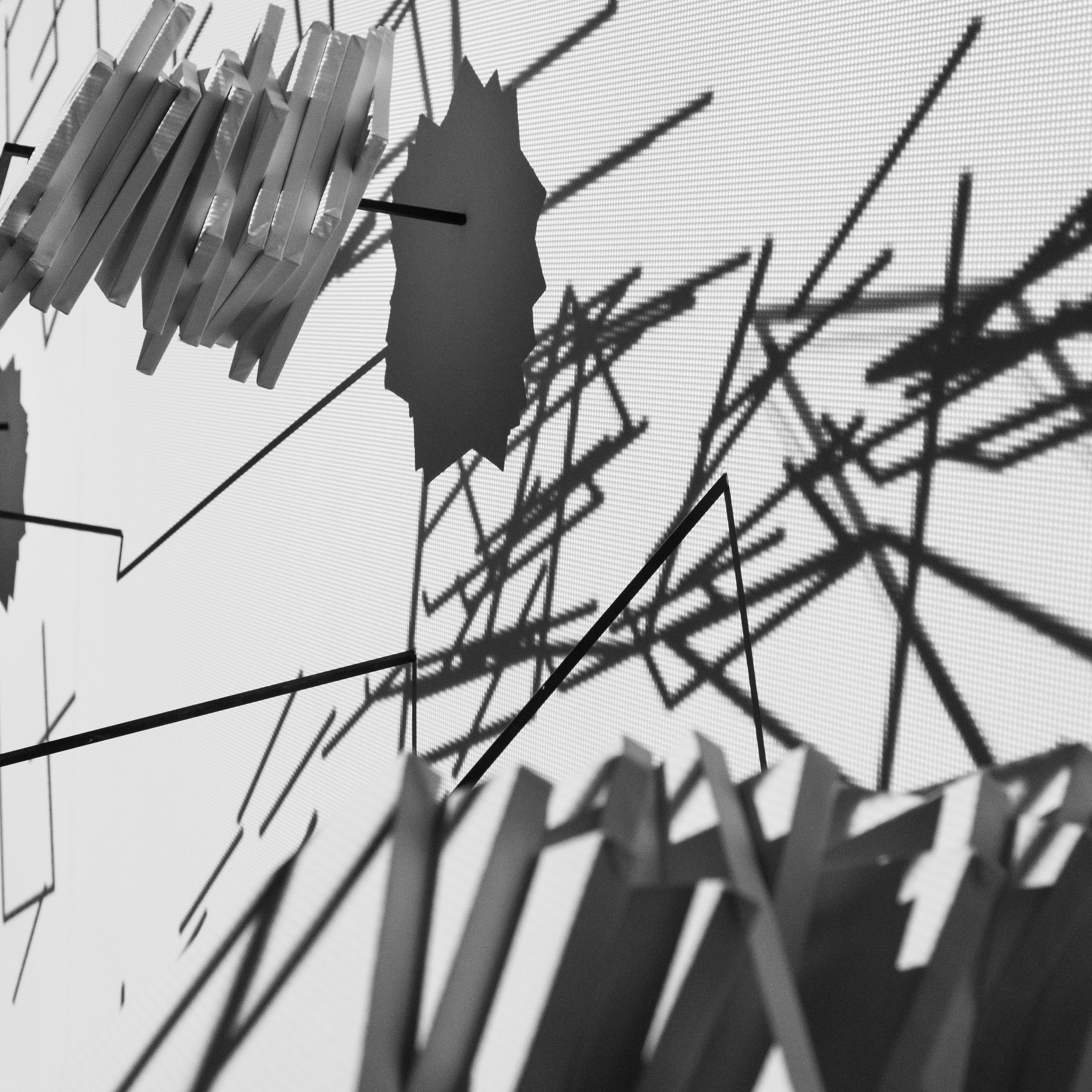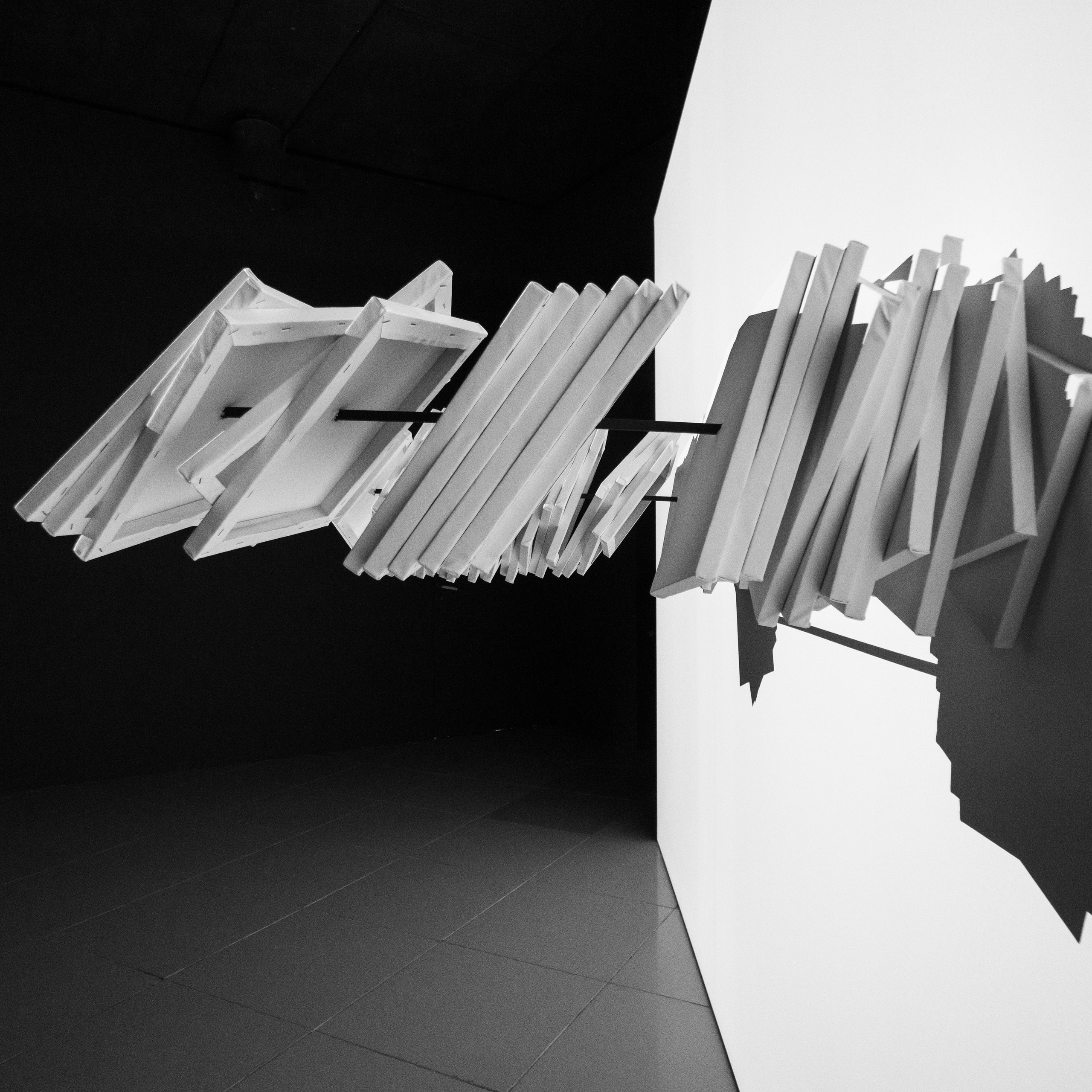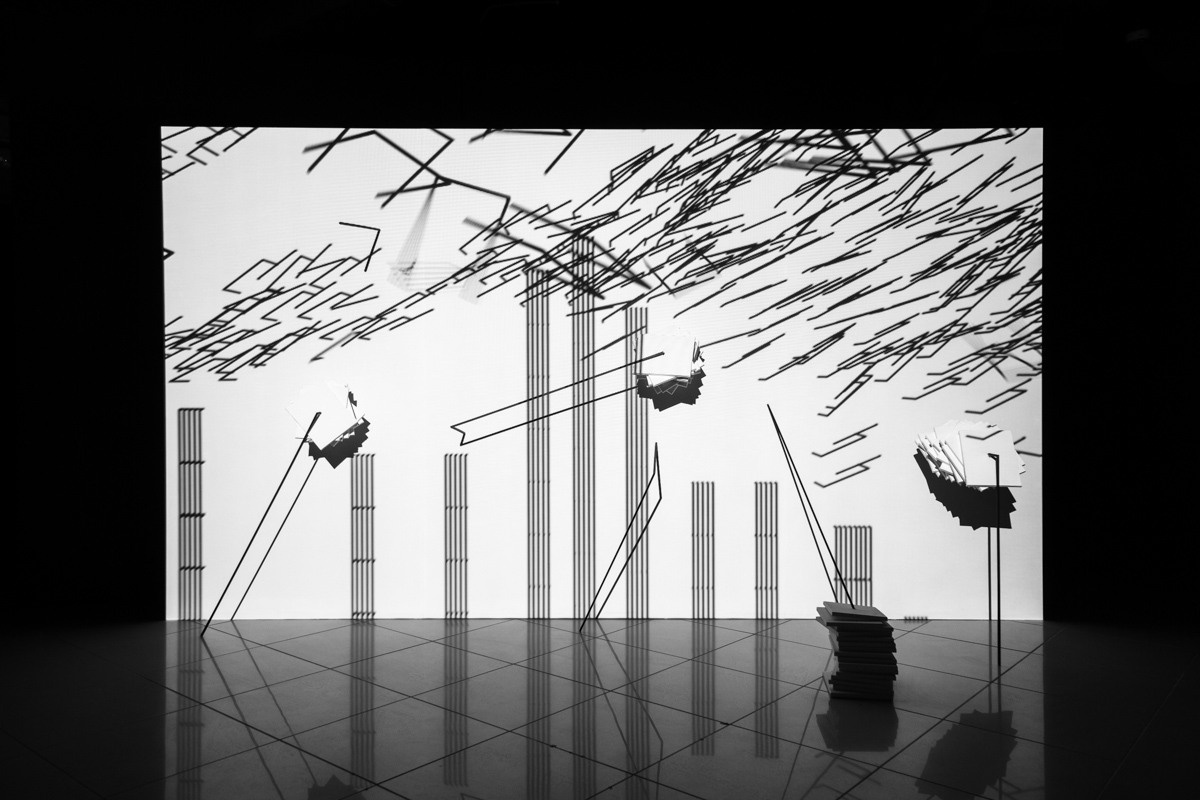
Personal show at PERMM Museum, Perm, Russia, 2020
Curator — Alisa Savitskaya
Architect — Evgeniya Mikheeva
Photo and video documentation — Grigory Skvortsov
Video installation, objects (metal staples, custom staples made of metal rod, blank canvases), Leonid Popov’s graphics from the Perm Art gallery archive
At the Culture of Materials exhibition, Slobtseva turned to Perm local context and created an homage to Perm artist Leonid Popov, a little-known graphic artist of the mid-20th century who focused on views of the city. The narrative of the project was built around teaching staples to draw: moving from one installation to another, the viewer watched how staples gradually acquired creative freedom and took on more and more complex artistic forms. In the final video installation, Popov’s drawing “Perm 1”, laid out from staples was assembled and then disintegrated into pieces. — Text from the Innovation catalogue, p. 74, Eng. trans.
Culture of Materials (PERMM Museum, 2020) balances on the border of avant-garde and realistic paradigms. From the avant-garde, the works of Elena Slobtseva inherit the inclusion of industrial materials in the artistic environment. The simplest functional element — a metal staple - is given not just visual value, but artistic will. The name “Culture of Materials” is borrowed from the artistic and educational practices of Vladimir Tatlin, who dreamed of blurring the boundaries between art and life.
The show opens with three projection screens with metal objects sticking out of them. The metal parts create a minimalist drawing as a 3D part of the screen and leave shadows, as projection is initially only white light, clearly pixelated when one approaches it. Some seconds later, animations appear, mirroring the metal parts and intensifying the dialogue between a 3-D object and 2-D image — pixels, metal lines and shadows.
The next element of the exhibition is booths, reminiscent of a laboratory or utility rooms in a factory. While the screens at the beginning of the exhibition may have been shaped like the abstract minimalism of the 1960s, this part shows staples as readymades, referring to another leading paradigm of “contemporary” art, coming from Duchamp. Construction staples seem to move from one booth to another, from a chaotic pile in the first booth to a functional staircase and then to a drawing of rails and railroad ties in the last booth.
In the next hall, the viewer is greeted by three more animations on separate screens. Unlike the previous ones, these are more figurative. The source of the figurative content comes from a drawing by the Soviet artist Leonid Popov (1920-1976), who worked and lived in Perm, my native city. The selected drawing — Perm I — was divided into arbitrary fragments (those presented at the show are the central parts — the sky with factory pipes, the railroad and the full rendered image of Popov’s drawing), with decisions on the final look and the size of fragments largely caused by current technical restrictions and the projectors' screening resolution in rendering line graphics. Animation is created with publicly available software algorithms, the use of software reveals the sign of our time — the fact that advanced technologies and automation affect most areas of our life, including art. Projection screens are also complimented with minimalist metal objects here, but now the latter also pierce multiple blank canvases, the signs of the traditional school of art. In animation, Popov’s strokes are replaced by staples, which enliven the artist’s soft, neutral manner, add sharpness and expression to the lines.
Next comes the installation with about 50 custom-made staples 1 m x 50 cm each, which were welded on installation site. The structure, made of arch-shaped elements, starts falling and becomes a splash/explosion in the middle then builds up mirroring the falling part in the reverse direction. Thus, regression becomes progress and vice versa, and the movement, or development, is trapped in a temporary loop.
Finally, the viewer finds a gallery space inside the exposition — with graphics by Leonid Popov, taken from the collection of the Perm Art Gallery for the duration of the exhibition. Popov mainly depicted Perm city scapes at the time when there was a social and political order to display positive changes and hopes for a bright socialist future. Comparison of Perm at that time and today is an invitation for a change in optics, discussions about the place, its history and the future, similar to the comparison within the exhibition of art historian references to the Russian avant-garde, the tradition of readymades, visual minimalism and the now commonplace automation and digitalization of everything.
Different photos, by Grigory Skvortsov


